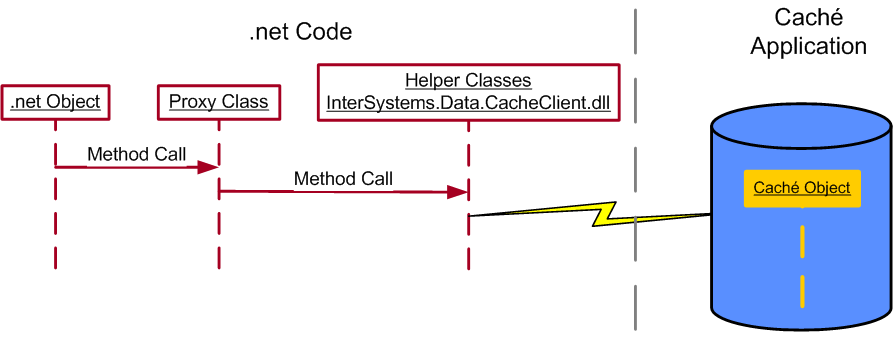Proxy Classes
When accessing Caché data through the CMP object interface, a .NET client object interacts directly with a set of .NET proxy classes. The proxy classes represent the Caché classes executing on the Caché server. Generally, a .NET application will contain one proxy class for each Caché class that the application accesses. These proxy classes use a set of helper classes, contained in the InterSystems.Data.CacheClient.dll assembly, to forward the application's requests to the Caché objects on the Caché server. The Caché objects, in turn, use the helper classes and proxies to return messages to the .NET client.
Using .NET proxies for Caché classes, .NET code can do all of the following:
-
Open Caché objects.
-
Update Caché objects.
-
Delete Caché objects.
-
Create new Caché objects.
-
Execute Caché methods.
-
Execute Caché queries.
Here is the sequence of events at runtime when .NET code uses a proxy class to execute a Caché method:

The Caché classes represented by proxies in the .NET application can be either persistent classes that represent Caché data or they can be transient classes that provide services but store no data.
For more in depth information on using .NET proxy classes, read Using Caché Proxy Classes in Using the Caché Managed Provider for .NET.